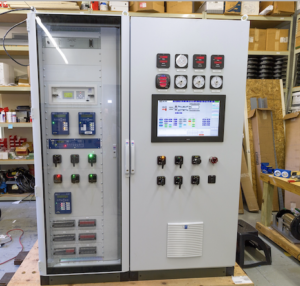Costs are rising in China. $600 – $800 per month is now a standard wage for factory labor. This is twice the going wage in Vietnam, and similar to the minimum wage of Portugal. Salaries for engineers and other professionals also match those of other high-middle income countries. Rents in Shenzhen are similar to those of a medium-sized US city.
However, something that remains affordable in China is the expertise of firms. Therefore, instead of looking to only leverage the labor and equipment of factories, we have been increasingly looking for projects that place a large emphasis on our partner’s knowledge and ability to innovate. Some examples:
confidence this factory could deliver
We partnered with a Shantou toy factory to design and prototype a small robot. Total cost to our client for electrical + mechanical design work was $7.5K, vs. a $100K quote from a US design firm. Initial prototype completed in two months. Now moving towards volume manufacturing.
We’ve helped one client build sourcing relationships for data networking products. When client had a need for a product meeting a new communication standard, factory developed this product to requirements, with no design fees, and minimal cost increase over previous units.
A client was interested in a custom machine control unit. We partnered with an existing touchscreen monitor manufacturer here in Shenzhen to make this happen. Given drawings and requirements, they were able to produce this unit to spec, with no engineering fees and competitive volume prices for our client.
A project involving advanced automation technology at an extremely affordable price. A high degree of coordination and customization, all provided for no additional charge. Top secret for now, so that’s all we’ll say.

Whether by initially copying or creating, Chinese factories have developed real knowledge for certain products. Further, the pricing on these projects show these companies are thinking like manufacturers, not design firms; their target is to cover or absorb costs in development, and make profits on production. Beside the obvious benefits of both low upfront and long term costs, these relationships also have the benefit of speed. Beginning with existing designs and know-how, these companies can arrive at a final product much more quickly than a US firm starting from scratch. Also, the manufacturing partner is inherently identified; there is no distinction between “design” and “design for manufacturing”.

There are risks to this approach. The first is in IP protection, which by nature often becomes shared. A contract can mitigate IP risks – prepared by a Chinese lawyer, in Mandarin and English, enforceable in Chinese courts. Legal costs are lower in China, so this solution can be both effective and affordable. The second risk comes in project management. Language barriers, cultural differences, and 8000 miles of ocean present additional challenges. Our approach involves daily digital communication, usually over WeChat or QQ, with frequent in-person visits to drive milestones and provide feedback.
Chinese factories can’t always work miracles. They can’t defy the laws of Physics. But when given a project that leverages their existing skill set and knowledge base, they can often innovate quickly and affordably. While we are increasingly looking to Vietnam for our more basic, labor intensive manufacturing services, we will certainly continue to seek these sorts of partnerships with Chinese firms.
